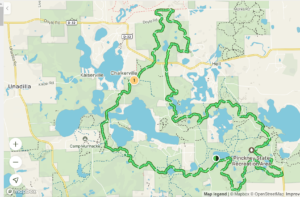
(Chelsea Update would like to thank Jennifer Fairfield for the information in this story.)
While you’re waiting for it to dry up a little outside, there are some things you can be doing indoors.
Then, you can be all ready to head outside. Just don’t head outdoors while the ground is really wet. Walking on wet ground can compact the soil and compacted soil doesn’t allow water, air, or nutrients to reach plants’ roots.
Make sure your garden tools are ready for the season – sharpen and clean pruners, loppers, and shovels.
Check gloves and garden hoses for holes; assess garden supports and stakes to make sure they are in good shape.
Replace whatever won’t make it through the season.
Have your lawn mower and other power equipment serviced so that it’s ready to go when the grass starts growing.
Inventory seeds to make sure you have what you need – get anything you’re missing early so you have the best selection.
Vegetables:
Start eggplant, pepper, and tomato seeds indoors now, so they will be ready to put out in your garden in about eight weeks. These heat-loving plants should not go outside until all chance of frost has passed, and nighttime temperatures are consistently above 50°, which is usually around Memorial Day.
Before starting to plant outdoors, test your soil. Your soil conditions change over time, so it’s best to do this every year. Knowing what your soil is lacking makes giving it what it needs to support good plant growth so much easier.
As it starts to warm up, pulling mulch away from plants that are starting to poke up out of the ground can help the soil warm up more quickly.
Plan to cover the plants back up if temps head below freezing at night. Adding a top dressing of compost to your soil, after you pull the mulch back, can help improve soil structure and fertility.
Wait to add new mulch to your planting beds, trees, and shrubs until the soil has warmed up fully – usually after Mother’s Day, or even as late as Memorial Day weekend. Putting down new mulch too soon can keep the soil from warming up, and slow your plants’ growth and flowering.
April is the month to clean up yard debris – branches that have fallen, driveway gravel plowed onto the lawn, etc. – to make lawn-mowing easier. If you have leaves left on the lawn, it’s a good idea to get those up as well. Just a thin layer of leaves left on the lawn can smother it.
On a dry day, rake them into a pile and then run them over with a lawn mower to chop them into small pieces. These bits of leaves make a great (free) mulch that you can add to your flower beds, trees, and shrubs.
When daytime temperatures are consistently in the 50’s, cut back grasses and most perennials that you left standing over the winter. The reason to wait until it has warmed up is to give the beneficial insects that have spent the winter in the hollow stems and on the leaves of your plants a chance to wake up.
If you just have to cut things back and clean up earlier, don’t discard what you remove – carefully place it somewhere else on your property that is out of sight. If you remove the debris from your yard altogether, you remove those insects (bees, butterflies, and other beneficials like praying mantis) from your yard as well, and lose the great things they can do for your gardens.
Wait to cut back semi-woody and woody perennials until the end of the month, then decide how much you want to trim based on where you see new growth, and how you want the plant to appear. Semi-woody perennials are ones that form woody stems, but aren’t as substantial as true shrubs or trees, and include Russian sage, lavender, and some thymes.
April is the time to apply weed preventer to your lawn.
Corn gluten is an organic weed preventer that helps keep the seeds of dandelion, crab grass, and other weeds from putting down roots when they germinate. It also naturally contains nitrogen, which can help get the lawn growing. It won’t kill perennial weeds that already exist in your lawn, but will keep new seeds from taking hold.
Once the soil is workable, peas, lettuce, and spinach can be planted. The simple way to tell if your soil is ready to be worked in (and on): Take a handful of soil and squeeze it. When you open your hand, if the ball stays together, it’s too wet. If it falls apart and is a bit crumbly, then it’s safe to venture into the garden.
Radishes and carrots should wait until the soil has warmed up a little more (at least 40°). Cabbage and kale transplants, as well as onion sets, can generally go out by mid-month; broccoli and cauliflower transplants should be OK to go out by the end of the month.
(Publisher’s note: Part 2 of this column will run tomorrow.)












